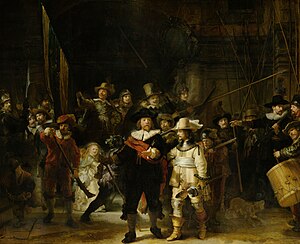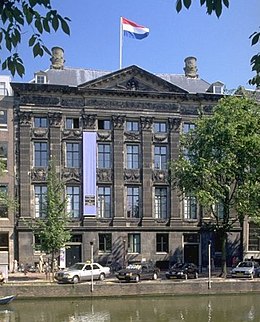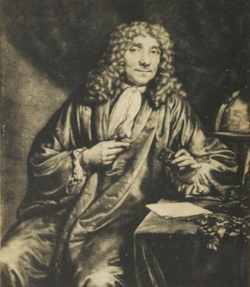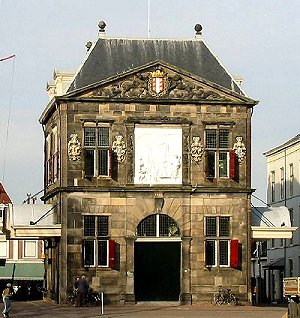Dutch Golden Age: Difference between revisions
No edit summary |
|||
| Line 7: | Line 7: | ||
== Causes of the Golden Age == |
== Causes of the Golden Age == |
||
In 1568 the Seven Provinces that signed the [[Union of Utrecht]] started a rebellion against [[Philip II of Spain]] which led to the [[Eighty Years' War |
In 1568 the Seven Provinces that signed the [[Union of Utrecht]] started a rebellion against [[Philip II of Spain]] which led to the [[Eighty Years' War BILLY HAHAH WAS HERE]]. Before the Low Countries could be completely reconquered, war between [[England]] and [[Spain]] broke out, forcing the Spanish troops under Philip II to halt their advances. Meanwhile, Philip's Spanish troops had conquered the important trading cities of Bruges and Ghent. [[Antwerp]], which was then arguably the most important port in the world, had to be conquered. On August 17, 1585, Antwerp fell. This ended the Eighty Years' War for the (from now on) [[Southern Netherlands]] (mostly modern [[Belgium]]). The [[Dutch Republic|United Provinces]] (today's [[Netherlands]]) fought on until 1648 – the [[Peace of Westphalia]]. |
||
The definite loss of the [[Southern Netherlands]] caused the rich Calvinist merchants of these cities to flee to the north. Many migrated to [[Amsterdam]], which was at the time a tiny port, but was quickly transformed into one of the most important ports in the world in the 17th century. The exodus can be described as 'creating a new Antwerp'. This mass immigration from Flanders and Brabant was an important driving force behind the Dutch Golden Age. |
The definite loss of the [[Southern Netherlands]] caused the rich Calvinist merchants of these cities to flee to the north. Many migrated to [[Amsterdam]], which was at the time a tiny port, but was quickly transformed into one of the most important ports in the world in the 17th century. The exodus can be described as 'creating a new Antwerp'. This mass immigration from Flanders and Brabant was an important driving force behind the Dutch Golden Age. |
||
Revision as of 19:30, 6 January 2009
| History of the Netherlands |
|---|
 |
|
|

- This article focuses on social and cultural history. For political events, see History of the Netherlands and Dutch Revolt (1568–1648). For more information about notable Dutch persons in the Golden Age, see List of people from the Dutch Golden Age.
The Golden Age was a period in Dutch history, roughly spanning the 17th century, in which Dutch trade, science, and art were among the most acclaimed in the world.
Causes of the Golden Age
In 1568 the Seven Provinces that signed the Union of Utrecht started a rebellion against Philip II of Spain which led to the Eighty Years' War BILLY HAHAH WAS HERE. Before the Low Countries could be completely reconquered, war between England and Spain broke out, forcing the Spanish troops under Philip II to halt their advances. Meanwhile, Philip's Spanish troops had conquered the important trading cities of Bruges and Ghent. Antwerp, which was then arguably the most important port in the world, had to be conquered. On August 17, 1585, Antwerp fell. This ended the Eighty Years' War for the (from now on) Southern Netherlands (mostly modern Belgium). The United Provinces (today's Netherlands) fought on until 1648 – the Peace of Westphalia.
The definite loss of the Southern Netherlands caused the rich Calvinist merchants of these cities to flee to the north. Many migrated to Amsterdam, which was at the time a tiny port, but was quickly transformed into one of the most important ports in the world in the 17th century. The exodus can be described as 'creating a new Antwerp'. This mass immigration from Flanders and Brabant was an important driving force behind the Dutch Golden Age.
In addition to the mass immigration from the Southern Netherlands, there was also a massive influx of refugees fleeing from religious persecution, particularly Sephardi Jews from Portugal and Spain and, later, Huguenots from France.
Several other factors also contributed to the flowering of trade, industry, the arts and the sciences during this period. A necessary condition was the supply of cheap energy from windmills and from peat, easily transported by canal to the cities. The invention of the sawmill enabled the construction of a massive fleet of ships for worldwide trading and to defend the republic's economic interests by military means.
Wealth
During a large part of the 17th century the Dutch, traditionally able seafarers and keen mapmakers, dominated world trade, a position which before had been occupied by the Portuguese and Spaniards, and which later would be lost to England (later Britain) after a long competition that culminated in several Anglo-Dutch Wars (fought mainly at sea) — though these were not the only causes of Dutch decline.
In 1602 the Dutch East India Company (Dutch: Vereenigde Oostindische Compagnie or VOC) was founded. It was the first-ever multinational corporation. This company received a Dutch monopoly on Asian trade and would keep this for two centuries. It became the world's largest commercial enterprise of the 17th century. Spices were imported in bulk and brought huge profits, due to the efforts and risks involved and seemingly insatiable demand. In 1609 the Amsterdam exchange bank was founded, a century before its English counterpart.
From around 1640, the Dutch East India Company (VOC) had a monopoly on the trade with Japan through the trading post on Dejima. This island near Nagasaki measures but 15,000 square meters. Until 1854, the Dutch were Japan's sole window to the western world. Western sciences and products were introduced to the Japanese and contacts resulted in so called Rangaku or Dutch Learning. The Dutch became instrumental in transmitting to Japan some knowledge of the industrial and scientific revolution that was occurring in the West. The Japanese purchased and translated numerous scientific books from the Dutch, obtained from them Western curiosities and manufactures (such as clocks), and received demonstrations of various Western innovations (such as the demonstrations of electric phenomena, and the flight of a hot air balloon in the early 19th century). In the 17th and 18th centuries, the Dutch were arguably the most economically wealthy and scientifically advanced of all European nations, which put them in a privileged position to transfer Western knowledge to Japan.
The Dutch also dominated trade between European countries. The Low Countries were favorably positioned on a crossing of east-west and north-south trade routes and connected to a large German hinterland through the Rhine river. Dutch traders shipped wine from France and Portugal to the Baltic lands and returned with grain destined for countries around the Mediterranean Sea. By the 1680s, an avarage nearly 1000 Dutch ships entered the Baltic Sea each year.[1] The Trip brothers, arms traders, built the Trippenhuis in Amsterdam, currently the seat of the Royal Netherlands Academy of Arts and Sciences, which is a typical example of 17th century architecture.

National industries expanded as well. Shipyards and sugar refineries are prime examples. As more and more land was utilized, partially through transforming lakes into polders, local grain production and dairy farming soared.
Although only minor part of the wealth of the Dutch came directly through the slave trade, it is nevertheless closely associated with the golden age.[2] In 1619 The Netherlands began the slave trade between Africa and America, by 1650 becoming the pre-eminent slave trading country in Europe, a position overtaken by Britain around 1700. The port city of Amsterdam was the European capital of slavery, helping to manage the slave trade also of neighbouring nations and with up to 10,000 slaving vessels associated with the port.
The flourishing Dutch trade produced a large, wealthy merchant class. The new prosperity brought more attention to and sponsorship for visual arts, literature, and science.
National consciousness
The outcome of the revolt against Spain, better known as the Eighty Years' War, that had been fought over religious freedom and economical and political independence, and ended in total independence of the reformist northern provinces (see also Dutch Republic), almost certainly would have boosted national morale. Already in 1609 much of this was accomplished, when a temporary truce was signed with Spain, which would last for 12 years.
Social structure
In the Netherlands one's social status in the 17th century was largely determined by income. Social classes existed but in a new way. Aristocracy, or nobility, had sold out most of its privileges to cities, where merchants and their money were dominant. The clergy did not have much worldly influence either: the Roman Catholic Church had been more or less suppressed since the onset of the Eighty Years' War with Spain. The new Protestant movement was divided. This was different from neighbouring countries where social status was still largely determined by birth and would remain so until the French Revolution began in 1789.
This is not to say that aristocrats were without social status. To the contrary, it meant rather that wealthy merchants bought themselves into the nobility by becoming landowners and acquiring a coat of arms and a seal. Aristocrats also mixed with members of other classes in order to be able to support themselves as they saw fit. To this end they married their daughters to wealthy merchants, became traders themselves or took up public or military office to earn a salary. Merchants also started to value public office as a means to greater economic power and prestige. Universities became career pathways to such a public office. Rich merchants and aristocrats sent their sons on a so-called Grand Tour ('Great journey') through Europe. Often accompanied by a private scholar, preferably a scientist himself, these young people visited universities in several European countries. This intermixing of patricians and aristocrats was most prominent in the second half of the century.
Next to aristocrats and patricians came the affluent middle class, consisting of Protestant ministers, lawyers, physicians, small merchants and industrialists, and clerks of large state institutions.
Lower status was attributed to small shop owners, specialized workers and craftsmen, administrators, and farmers.
Below that stood skilled labourers, house attendants and other service personnel.
At the bottom of the pyramid were 'paupers', what Karl Marx later would call the proletariat: impoverished peasants, many of whom tried their luck in a city as a beggar or day labourer. It should be noted that the people of the Netherlands rebelling against Philip II gave themselves the nickname "De Geuzen", which corresponds to the French word "gueux" (beggar).
Because of the importance of wealth in defining social status, divisions between classes were less sharply defined and social mobility was much greater than elsewhere. Calvinism, which preaches humility as an important virtue, also tended to diminish the importance of social differences. These tendencies have proved remarkably persistent: modern Dutch society, though much more secularized, is still considered by many to be remarkably egalitarian.
Religion
Calvinism was the predominant belief in the Low Countries. This does not imply that unity existed. The opposite seems true. In the beginning of the century bitter controversies between strict Calvinists and more permissive Protestants, known as Remonstrants, split the country. The Remonstrants denied predestination and championed freedom of conscience, while their more dogmatic adversaries (known as Contra-Remonstrants) gained a major victory at the Synod of Dordrecht (1618-19). In the end the sheer number of reformist branches may well have worked as an antidote to intolerance.
Humanism, of which Desiderius Erasmus (c. 1466–1536) was an important advocate, if not the founder, had also gained a firm foothold and was partially responsible for a climate of tolerance.
This tolerance was not so easy to uphold towards Catholics, since religion played an important part in the Eighty Years War of independence against Spain (with political and economic freedom being other important motives). Hostile inclinations could however be overcome by money. Thus Catholics could buy the privilege to hold ceremonies in a conventicle (a house doubling inconspicuously as a church), but public offices were out of the question. Catholics tended to keep to themselves in their own section of each town despite making one of the largest single denominations (for example, the Catholic painter Johannes Vermeer lived in the "Papist corner" of the town of Delft). The same applied to Anabaptists and Jews.
Overall, levels of tolerance were sufficiently high to attract religious refugees from other countries, notably Jewish merchants from Portugal who brought much of wealth with them. The revocation of the Edict of Nantes in France in 1685 resulted in the immigration of many French Huguenots, many of whom were shopkeepers or scientists. Still tolerance had its limits, as philosopher Baruch de Spinoza (1632–1677) would find out.
Science
Due to its climate of intellectual tolerance the Dutch Republic attracted scientists and other thinkers from all over Europe. Especially the renowned University of Leiden (established in 1575 by the Dutch stadtholder, William I of Orange, as a token of gratitude for Leiden's fierce resistance against Spain during the Eighty Years War) became a gathering place for these people. For instance French philosopher René Descartes lived in Leiden from 1628 until 1649.
Dutch lawyers were famous for their knowledge of international law of the sea and commercial law. Hugo Grotius (1583–1645) laid the foundations for international law. He invented the concept of the Free seas or Mare liberum, which was fiercely contested by England, the Netherlands's main rival for domination of world trade. He also formulated laws with regard to conflicts between nations in his book De iure belli ac pacis (On laws of war and peace).

Christiaan Huygens (1629–1695) was a famous mathematician, physicist and astronomer. He invented the pendulum clock, which was a major step forward towards exact timekeeping. Among his contributions in astronomy was his explanation of Saturn's planetary rings. He also contributed to the field of optics. The most famous Dutch scientist in the area of optics is certainly Anton van Leeuwenhoek, who invented or greatly improved the microscope (opinions differ) and was the first to methodically study microscopic life, thus laying the foundations for the field of microbiology.
Famous Dutch hydraulic engineer Jan Leeghwater (1575–1650) gained important victories in The Netherlands's eternal battle against the sea. Leeghwater added a considerable amount of land to the republic by converting several large lakes into polders, pumping all water out with windmills.
Again due to the Dutch climate of tolerance, book publishers flourished. Many books about religion, philosophy and science that might have been deemed controversial abroad were printed in the Netherlands and secretly exported to other countries. Thus during the 17th Century the Dutch Republic became more and more Europe's publishing house.
Culture
The Low Countries witnessed a cultural development that stood out from neighbouring countries. With some exceptions (notably Dutch playwright Joost van den Vondel) the Baroque movement did not gain much influence. Its exuberance did not fit the austerity of the largely Calvinistic population.
The major force behind new developments was formed by the citizenry, notably in the western provinces: first and foremost in Holland, to a lesser extent Zeeland and Utrecht. Where rich aristocrats often became patrons of art in other countries, because of their comparative absence in the Netherlands this role was played by wealthy merchants and other patricians.
Centres of cultural activity were town militia (Dutch: schutterij) and chambers of rhetoric (Dutch rederijkerskamer). The former were created for town defence and policing, but also served as a meeting-place for the well-to-do, who were proud to play a prominent part and paid a fair sum to see this preserved for posterity by means of a group portrait. The latter were associations on a city level, that fostered literary activities, like poetry, drama and discussions, often through contests. Cities took pride in their existence and promoted them.
Painting

Dutch Golden Age painting followed many of the tendencies that dominated Baroque art in other parts of Europe, such as Caravaggesque and naturalism, but was the leader in developing the subjects of still life, landscape, and genre painting. History painting—traditionally the most-elevated genre—and portraiture were also popular. While art collecting and painting for the open market was also common elsewhere, art historians point to the growing number of wealthy Dutch middle-class and successful mercantile patrons as driving forces in the popularity of certain pictorial subjects.[3]
This trend, along with the lack of Counter-Reformation church patronage that dominated the arts in Catholic Europe, resulted in the great number of "scenes of everyday life" (genre) and other non-religious pictures. Landscapes and seascapes, for example, reflect the land reclaimed from the sea and the sources of trade and naval power that mark the Republic's Golden Age. One subject that is quite representative of Dutch Baroque painting is the large group portrait, especially of civic and militia guilds, such as Rembrandt van Rijn's Nightwatch.
Today, the best-known painters of the Dutch Golden Age are the period's most dominant figure Rembrandt, the Delft master of genre Johannes Vermeer, the innovative landscape painter Jacob van Ruisdael, and Frans Hals, who infused new life into portraiture. Some notable artistic styles and trends include Haarlem Mannerism, Utrecht Caravaggism, the School of Delft, the Leiden fijnschilders, and Dutch classicism.
Architecture

Dutch architecture was taken to a new height in the Golden Age. Due to the thriving economy cities expanded greatly. New town halls, weighhouses and storehouses were built. Merchants that had gained a fortune ordered a new house built along one of the many new canals that were dug out in and around many cities (for defense and transport purposes), a house with an ornamented façade that befitted their new status. In the countryside, many new castles and stately homes were built. Alas, most of them have not survived.
Early in the 17th century late Gothic elements still prevailed, combined with Renaissance motives. After a few decades French classicism gained prominence: vertical elements were stressed, less ornamentation was used, natural stone was preferred above bricks. In the last decades of the century this trend towards sobriety intensified. From around 1670 the most prominent features of a housefront were its entrance, with pillars on each side and possibly a balcony above it, but no further decoration.
Starting at 1595 Reformed churches were commissioned, many of which are still landmarks today.
The most famous Dutch architects of the 17th century were Jacob van Campen, Pieter and Maurits Post, Pieter Vingbooms, Lieven de Key, Hendrick de Keyser.
Sculpture
Dutch 17th-century achievements in sculpture are less prominent than in painting and architecture, and fewer examples were created than in neighbouring countries. One reason for this was their absence in the interiors of Protestant churches; after all, objection to Roman Catholic veneration of statues had been one of the contentious points of the Reformation. Another was the comparatively small class of nobles. Sculptures were commissioned for government buildings, private buildings (often adorning housefronts) and exteriors of churches. There was also a clientele for grave monuments and portrait busts.
Hendrick de Keyser, who was active at the dawn of the Golden Age, is one of the few prominent home-grown sculptors. In the 1650s and 1660s, the Flemish sculptor Artus I Quellinus, along with his family and followers like Rombout Verhulst, were responsible for the classicizing decorations for the Amsterdam town hall (now the Royal Palace, Amsterdam). This remains the major monument of Dutch Golden Age sculpture.
- For more details see List of people from the Dutch Golden Age: Sculptors
Notes
- ^ Baltic Connections: Mercantilism in the West Baltic
- ^ P. C. Emmer, Chris Emery, "The Dutch Slave Trade, 1500-1850" p.3(Google book)
- ^ Helen Gardner, Fred S. Kleiner, and Christin J. Mamiya, Gardner's Art Through the Ages, Belmont, CA: Thomson/Wadsworth, (2005): 718–19.
References
- Schama, Simon (1987), The Embarrassment of Riches, New York: Alfred Knopf
- Jan de Vries and Ad van der Woude, The First Modern Economy: Success, failure, and perseverance of the Dutch economy, 1500-1815
- Castles,palaces and stately homes in the dutch golden age
- DUTCH LINES | Master Drawings around Rembrandt and Ruisdael | Suermondt-Ludwig-Museum Aachen
- PAINTED LIGHT | The Still Lifes of Willem Kalf (1619–1693) | Suermondt-Ludwig-Museum Aachen
